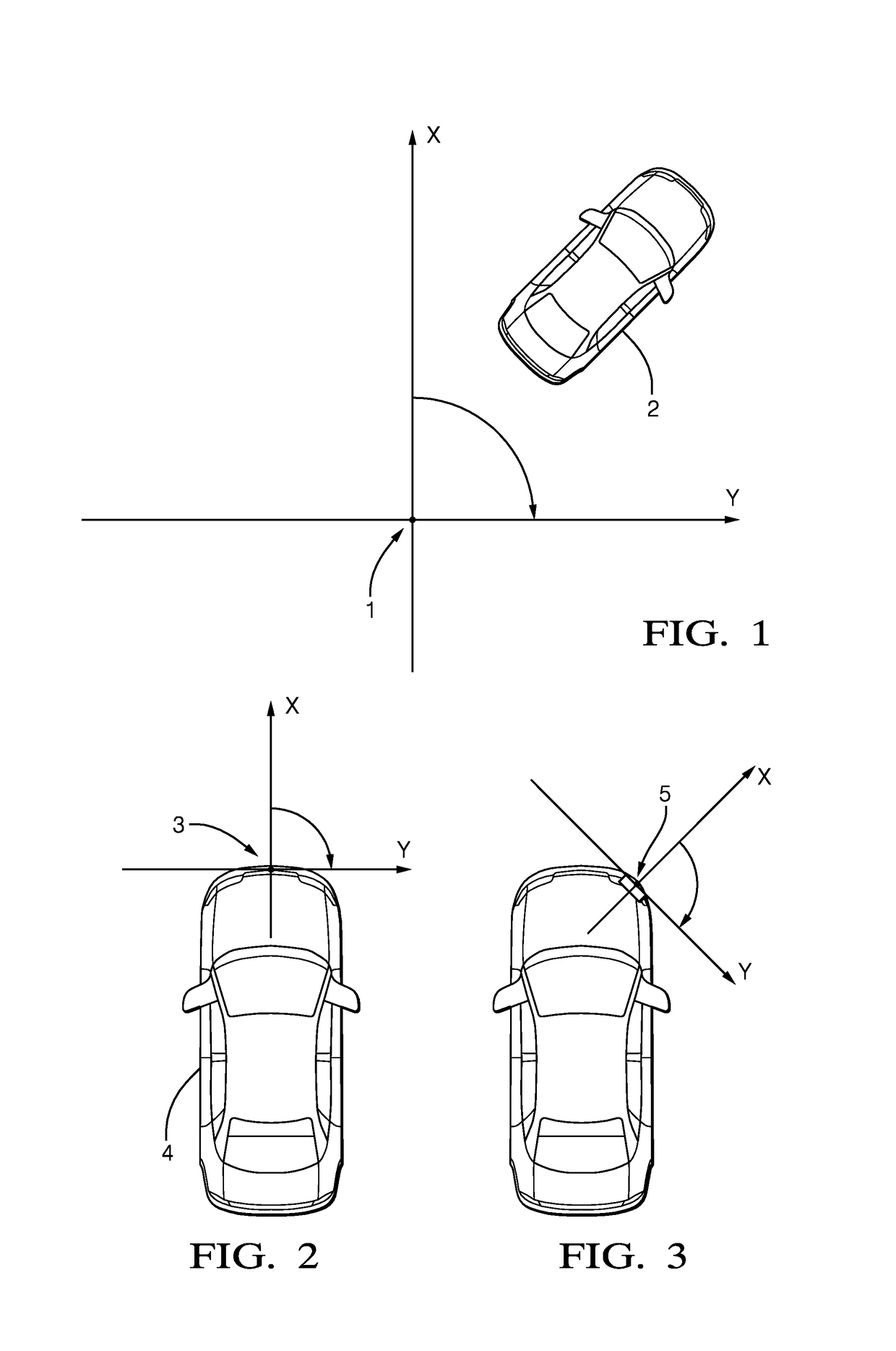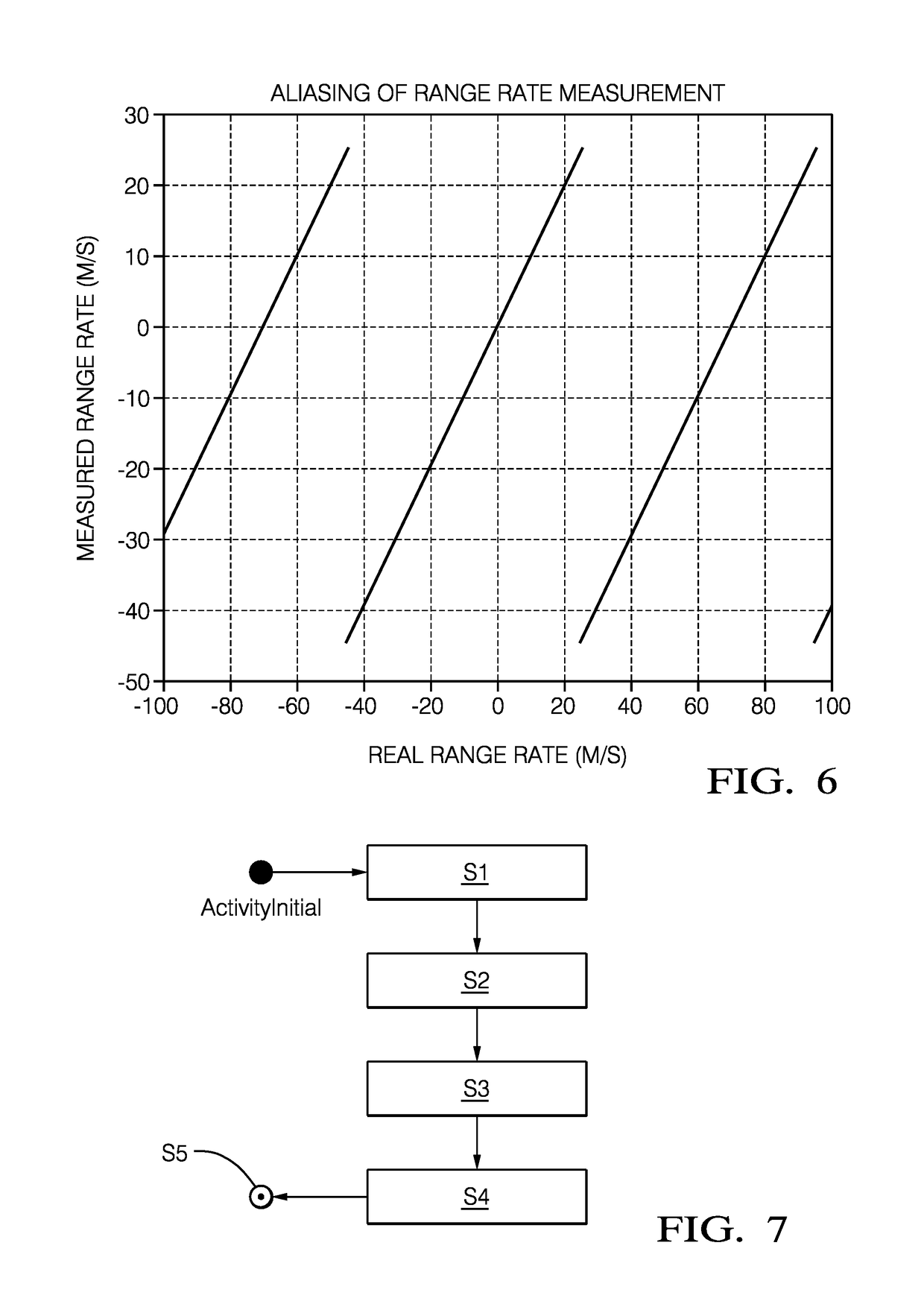Method of determining the de-aliased range rate of a target
a target and range rate technology, applied in the direction of instruments, measurement devices, using reradiation, etc., can solve the problems of inability to support velocity estimation, inability to compute complexity, and cancellation of range measuremen
- Summary
- Abstract
- Description
- Claims
- Application Information
AI Technical Summary
Benefits of technology
Problems solved by technology
Method used
Image
Examples
example 1
Step 1
[0065]In an initial step the method comprises emitting a radar signal at a single time-point instance and determining from a plurality (m) of point radar detections measurements therefrom captured from said radar sensor unit in a said single radar measurement instance the values for each point detection of azimuth and range rate; [θi, {dot over (r)}i]Thus there are several point detections captured by the Doppler radar from a single target (such target is usually referred to as a distributed target) as shown in FIG. 4.
Step 2
[0066]In the next step range rate compensated by sensor speed is calculated {dot over (r)}i,cmp={dot over (r)}i+us cos θi+vs sin θi, where {dot over (r)}i—raw range rate (or radial velocity); θi— raw azimuth angle; {dot over (r)}i,cmp—range rate compensated; and us—host vehicle or sensor longitudinal velocity; vs—host vehicle or sensor lateral velocity.
Step 3
[0067]In the next step a plurality of plausible velocity profile hypotheses is calculated / determined...
implementation example
[0081]The methodology according to examples has been implemented and used verifying the de-alias status of a velocity profiles. This was applied when such verification is not available from a Tracker algorithm (de-aliasing in time). In Object Hypotheses implementation only one (j=0) velocity profile hypothesis is considered with two plausibility checks (7b, 7c).
[0082]FIG. 7 shows a flow chart of the basic methods steps. The method starts and in step S1 where the velocity profiles are hypothesized. In step S2 the detections are analysed. In step S3 the de-aliasing parameter(s) are analysed for the velocity profiles and detection data. In step S4 the variance is calculated and Step S5 the final results are determined.
[0083]FIG. 8 shows the execution path of the OH De-Alias By Velocity Profile component. The process starts at step S10. As step S11 the de-alias status of the detection group is determined. If it is determined that it is not de-aliased the process moves to step S12 where ...
example i
)
[0089]In this scenario, the target vehicle is overtaking the host vehicle 31, as seen in FIG. 9a. FIGS. 9b and 9c show diagrammatic representations of five velocity profile hypotheses in relation to FIG. 9a. The box 31 is the reference object (measured with the differential GPS) having the velocity vector specified for the center of the front bumper (dashed line 32). The lines 34 represent different hypotheses of velocity vector estimators. The crosses 35 represent raw detections from the distributed target.
[0090]Table 1 below shows the experimental results for the example 1.
Hypothesis index (j)−2−1012{tilde over (c)}t, j [m / s]−131.4−69.1−6.655.8118.3{tilde over (s)}t, j [m / s]44.628.311.9−4.42−20.7{circumflex over (σ)}{dot over (r)}, j [m / s]3.861.950.131.93.81
PUM
 Login to View More
Login to View More Abstract
Description
Claims
Application Information
 Login to View More
Login to View More - R&D
- Intellectual Property
- Life Sciences
- Materials
- Tech Scout
- Unparalleled Data Quality
- Higher Quality Content
- 60% Fewer Hallucinations
Browse by: Latest US Patents, China's latest patents, Technical Efficacy Thesaurus, Application Domain, Technology Topic, Popular Technical Reports.
© 2025 PatSnap. All rights reserved.Legal|Privacy policy|Modern Slavery Act Transparency Statement|Sitemap|About US| Contact US: help@patsnap.com



